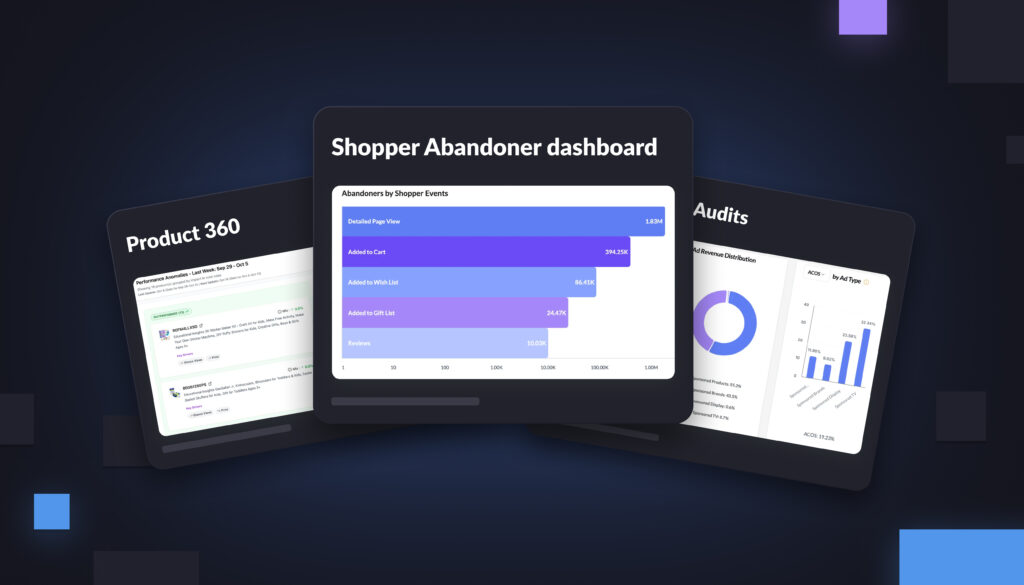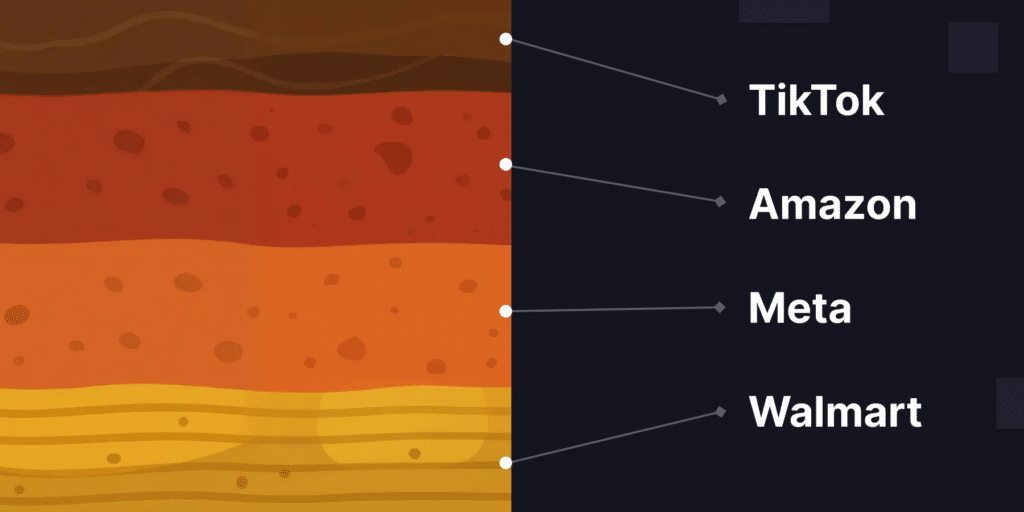The most important question every brand needs to answer right now is this: What’s your competitive edge? What makes shoppers choose your product over a rival’s?
For a lot of Amazon-native brands in particular, their competitive edge is a huge blindspot. You might know which keywords perform well for you, but you don’t actually have a great sense of who is buying from you and why.
What is your typical shopper persona? What are the aspects of your product or your brand that makes the difference between a sale and a shopper dropping off?
While being able to answer these questions has always been important, the age of AI has made them table stakes for successful marketing.
Amazon is saturated with relatively anonymous products across most categories.
To stand out in an age of AI product discovery, you need to know which product features or branding choices are driving customers to purchase from you specifically.
Here’s how to do it.
Why competitive edge matters so much in the age of AI
Here’s the thing: Amazon is pushing more and more shoppers to begin their searches on its AI shopping assistant, Rufus. That is changing how discovery happens.
The way people search for products via AI is much more feature-forward than through regular searches. Instead of typing keywords into Amazon, shoppers instead are increasingly asking Rufus for recommendations based on product attributes.
That means you won’t see as many searches for “noise-canceling headphones.” Rather, you’ll get a shopper asking Rufus or ChatGPT, “I’m looking for a pair of noise-cancelling headphones that are very portable.”
The AI then spits out a list of products that are specifically recommended to that customer.
How do you ensure your product gets included in that list of recommendations? As we outlined previously, Rufus and other AI shopping assistants are scraping your product content for clues to the answer.
You need to revamp your content to be ready for AI crawlers.
A tactic many brands have used is to create a FAQ section in their content on Amazon and Shopify, which anticipates—and answers—favorable questions that shoppers are most likely to ask.
So for that headphones example: If portability is your edge, make sure to highlight in your content that your headphones have dual hinges that make them easy to fold.
In other words, underscore that they are high quality and highly portable. Make a FAQ that drives this home, too.
How do you identify your competitive edge?
A lot of brands on Amazon know astonishingly little about their customers. Identifying your target persona, and why they come to you, can feel like a herculean task.
For a long time, Amazon made it difficult to obtain all but the most basic information about your shoppers. But luckily, we don’t live in that world anymore.
Here are a few tactics you can use to get a deeper understanding of what makes you stand out.
Run a basic demographic analysis. Through a bit of Amazon Marketing Cloud savvy, you can very easily identify your core audience based on demographic, location, and more.
Intentwise Explore, our solution for AMC, lets you pull an AMC report that tracks your sales performance and market penetration rate against every audience Amazon offers.
These include both demographic characteristics (age, income, homeowner status) as well as general interest audiences (football fans, etc).
With this report, you can see exactly which groups of people are most and least likely to buy from you.
Intentwise can help you do this easily—and you might make some unexpected discoveries in the process.
If you find that your snack brand significantly overperforms with soccer fans, for instance, maybe that’s a sign that it’s time to mention soccer across your content.
You might tout your product as a great snack for soccer fans—so if someone asks Rufus to recommend snacks for a soccer watch party, your product will come up.
Analyze your top keywords. A really quick way to locate your edge is to track your highest-converting keywords. On which keywords do you have the highest click and conversion rates?
Studying the patterns across those top keywords gives you a really good sense of which qualities are worth boosting in your content.
If your headphone is getting a lot of traction on keywords related to portability, then that’s a sign to ensure portability is prominently discussed on your product page.
You might even consider creating a brief FAQ on your pages that discusses its foldability and portability.
You can do this keyword analysis by glancing at your Search Query Performance report, and filtering for the keywords where you have an outside conversion rate compared to your competitors.
Study review sentiment. Lastly, your Amazon reviews are a great feedback mechanism for understanding what’s really working.
Amazon offers a review sentiment analysis within Seller Central that highlights the phrases and features that customers reference most.
If you want to go deeper, you can also run your own sentiment analysis with AI.
Aspects of your product that get the most praise from customers are also very likely to be your prime selling points. These are the features that you want to be sure you’re emphasizing prominently in your content, and that you’re building FAQs around.
If reviews aren’t enough, you might also consider sending out a post-purchase survey, where you can specifically ask your customers why they chose their product.
Those answers will be invaluable for reframing your content.
Big picture: When customers ask Rufus about a product like yours, you want to be sure you’re showing up in that recommendation list.

![[Finding your competitive edge] Blog Post [Finding your competitive edge] Blog Post](https://www.intentwise.com/blog/wp-content/uploads/elementor/thumbs/Finding-your-competitive-edge-Blog-Post-scaled-r8ewyx4sw5b3ln71tqkraryn6up73a3orncvf9frcw.jpg)


